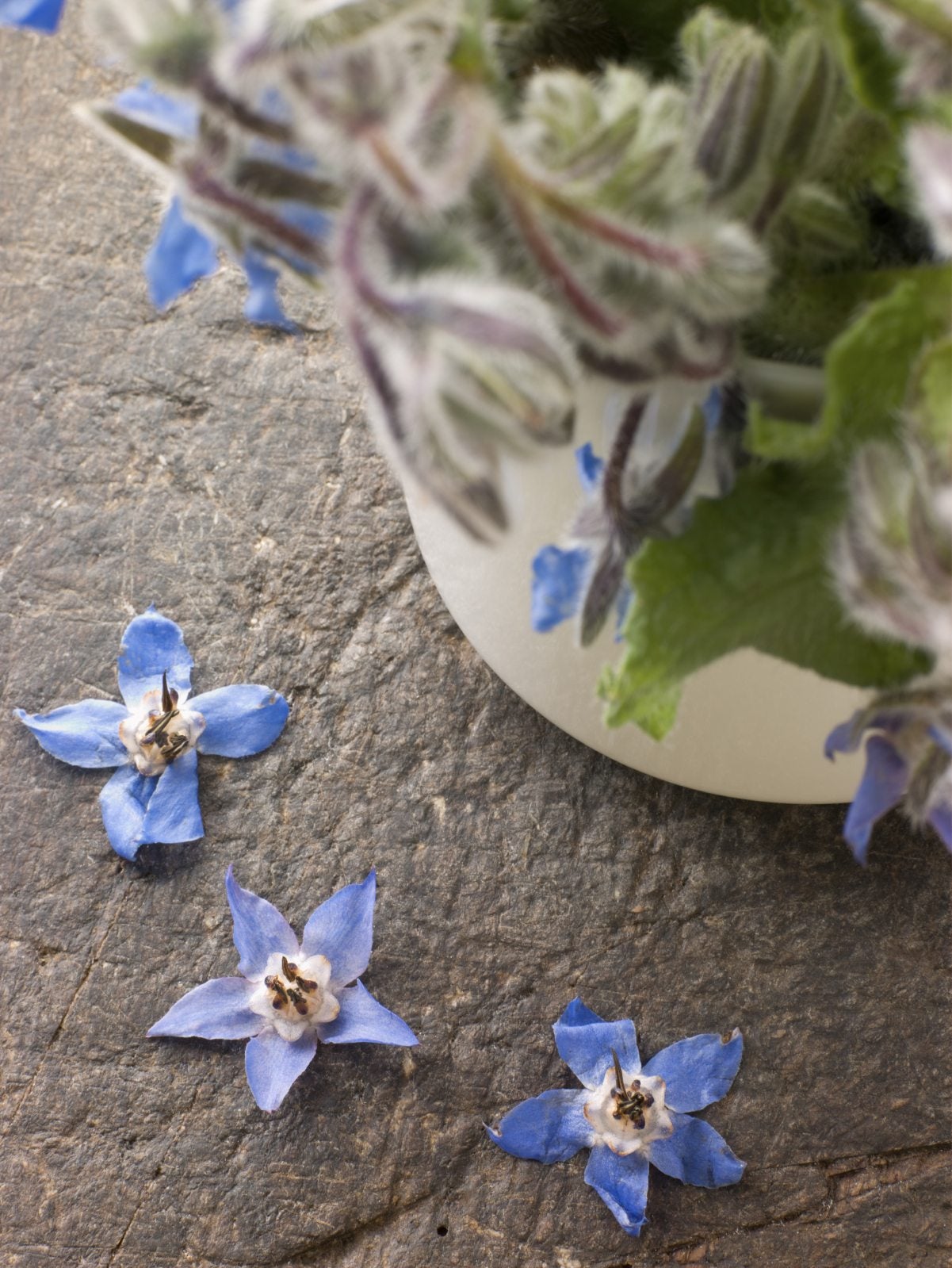Container Grown Borage: Learn About Growing Borage In Pots


A warm-season annual native to the Mediterranean, borage is easily recognized by its bristly, gray-green leaves and five-petaled, star-shaped blooms, which are usually intense blue. However, less common varieties with white or pale blue blooms are also available. If you don’t have space in your garden, or if you’re concerned about the plant’s rambunctious growth habit, consider growing borage in containers.
Borage Growing Conditions
This beautiful herb definitely isn’t fussy. Borage prefers full sunlight but tolerates light shade. In the ground, borage thrives in rich, well-drained soil. However, potted borage plants do fine in any well-drained commercial potting soil.
Growing Borage in Pots
Borage reaches heights of 2 to 3 feet (61-91 cm.) and the taproot is long and sturdy. Therefore, potted borage plants need a sturdy container with a depth and width of at least 12 inches (31 cm.). Although you can grow borage from seed, most gardeners prefer to start with bedding plants, which are generally available in garden centers or specialty herb stores. If you are adventurous, plant seeds directly in the container soon after the last frost in spring or start the seeds indoors a few weeks earlier. Keep in mind that because of its long taproot, borage doesn’t transplant well. Starting the plant in its permanent home can save you trouble down the road.
Caring for Container Grown Borage
Water borage deeply whenever the top 1 to 2 inches (2.5-5 cm.) of potting media feels dry to the touch, then let the pot drain. Check often during hot, dry weather, as containerized plants dry quickly, but be careful not to let the soil become soggy, which promotes rot. Borage in containers generally requires no fertilizer. If you decide to feed the plant, use a diluted solution of a water-soluble fertilizer. Avoid overfeeding, which often promotes lush foliage but few blooms. Borage tends to be relatively pest-resistant, but the plant is sometimes bugged by aphids. If you notice the tiny pests, spray the plant with insecticidal soap spray. Pinch tips of young plants to keep borage compact and bushy and snip the leaves as needed for use in the kitchen. You can also trim the plant if it looks overgrown in midsummer. Be sure to deadhead blooms as soon as they wilt. Otherwise, the plant will go to seed, and blooming will end early. The plant may also need stakes to keep it upright.
Sign up for the Gardening Know How newsletter today and receive a free copy of our e-book "How to Grow Delicious Tomatoes".

A Credentialed Garden Writer, Mary H. Dyer was with Gardening Know How in the very beginning, publishing articles as early as 2007.